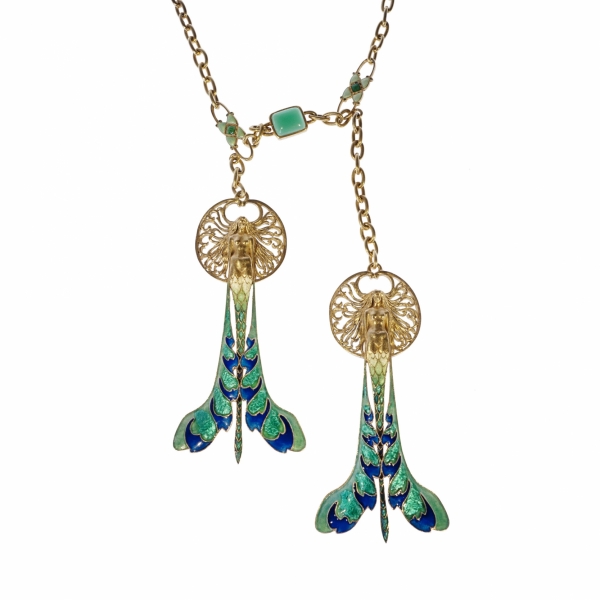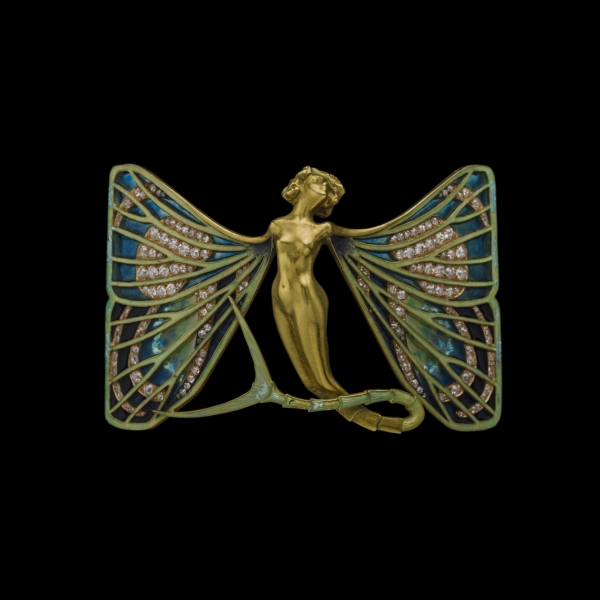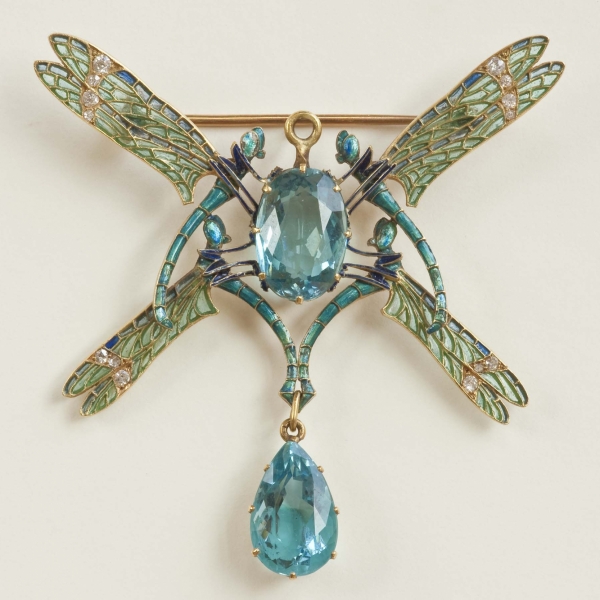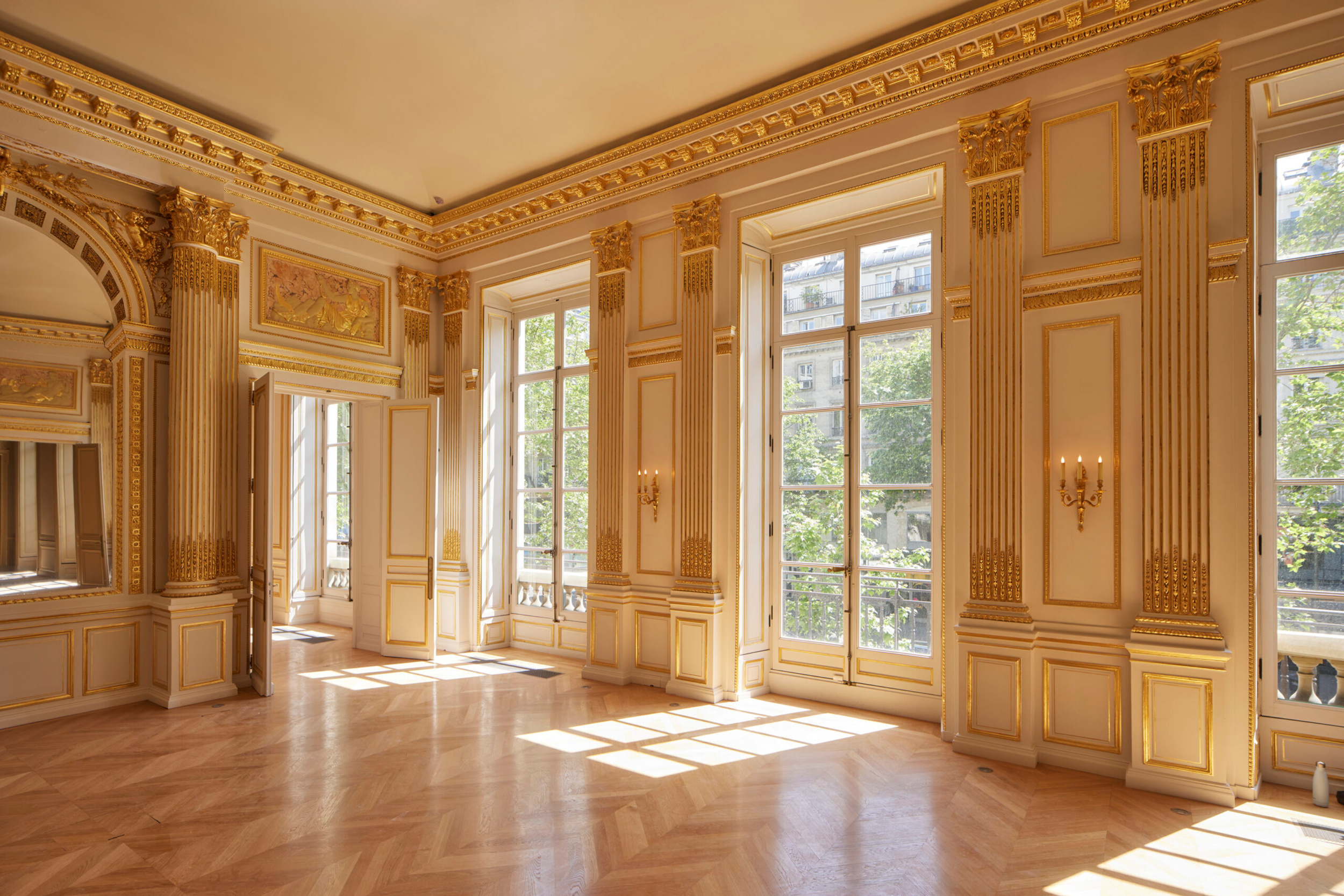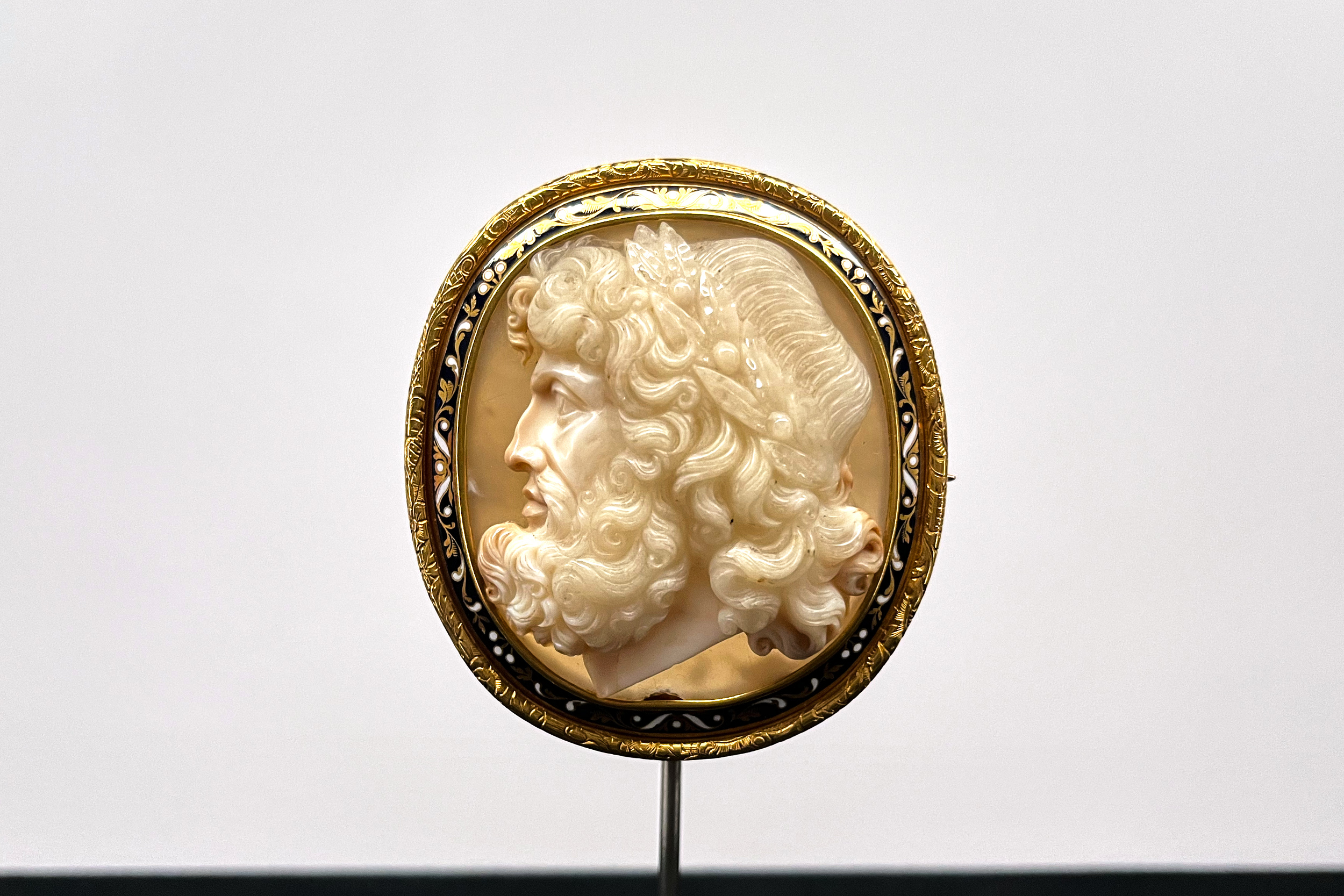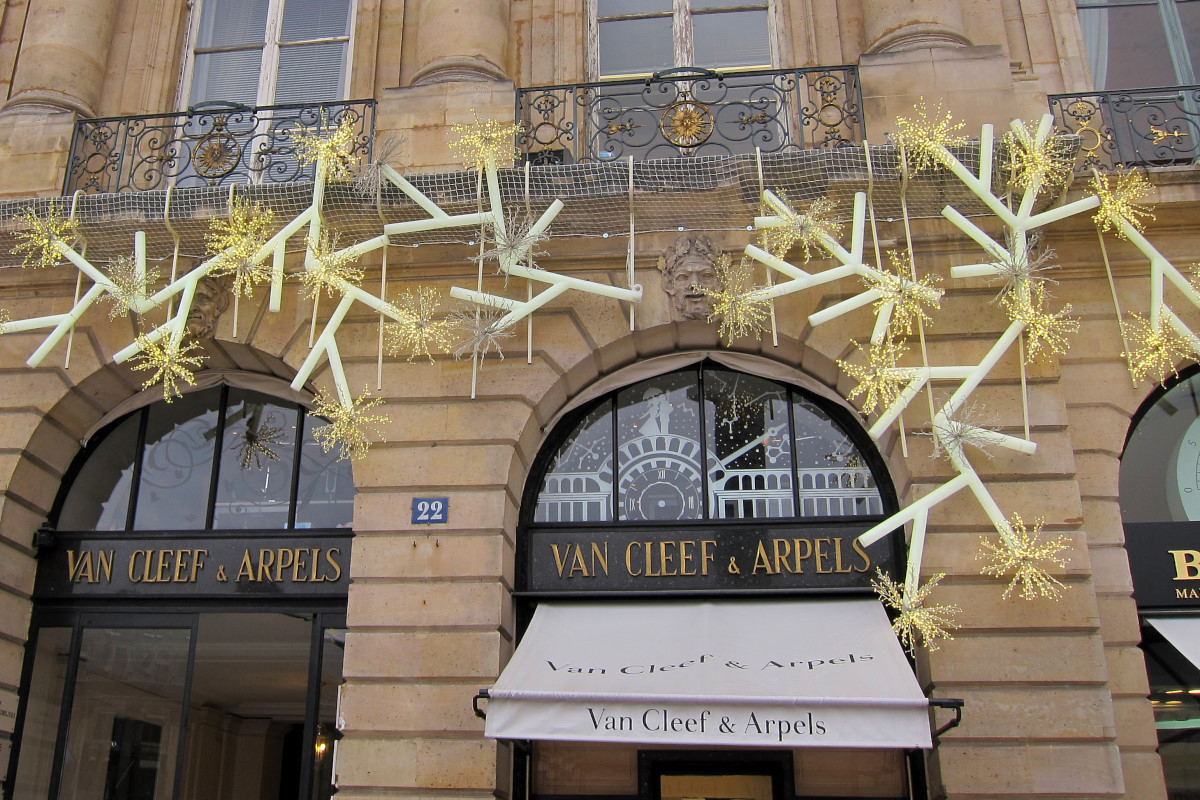A new exhibition organised by L’ÉCOLE, School of Jewelry Arts showcases a selection of almost 100 jewellery pieces from museum, patrimonial and private collections from the turn of the 19th and 20th centuries.
A splendid start to the summer – from 2 June the L’ÉCOLE, School of Jewelry Arts headquartered at the 31 rue Danielle Casanova in Paris will once again be filled with amazing objects, this time dedicated to Art Nouveau.
Art Nouveau was an international philosophical, architectural, applied and decorative art style, most popular between 1890 and 1910. It is closely related to Secession (the Viennese branch of Art Nouveau) and Jugendstil (in Germany). This period was also called the Belle Époque, golden age or long century. To many people the 19th century essentially lasted until 1914, the onset of WWI. The Belle Époque appears to be a time of ‘joie de vivre’ or joy of living.
The roots of Art Nouveau can be traced back to the ‘Arts and Crafts Movement’ in England during the second half of the 19th century. Arts and Crafts is often seen as a response to growing industrialisation in Europe and the rise of mass production at the expense of traditional craftsmanship. At the end of the century in France and soon in all Europe, these kinds of movements converged towards Art Nouveau in a creative spirit that enlivened the work of the workshops.
Art Nouveau style is inspired by the natural world – characterised by sculptural and organic shapes, curved lines, a wide range of materials, diverse but mostly earthy colours and voluptuous ornamentation. Common motifs on glassware, ceramics, interiors or book and poster illustrations include leaves, flowers, vines, insects, animals and other natural elements.
Decorative, sensual, and uncompromising – as the Victoria and Albert Museum summarises. Art Nouveau artists sought to integrate art with the everyday, producing delightful objects to elevate people’s lives. In the creation of jewellery and accessories many artisans were absolutely fulfilled and engaged with the most lavish fantasies. Artists like René Lalique, Georges Fouquet, Elizabeth Bonté, Victor Prouvé, Jean Dampt, Jules Desbois, Edward Colonna and Eugène Grasset had to be rather innovative with the application and combination of the materials.
In the early 1910s, the new Art Deco aesthetics emerged, more inspired by geometry, but Art Nouveau ultimately developed a very rich legacy. L’ÉCOLE, School of Jewelry Arts, under the curatorship of Rossella Froissart (École Pratique des Hautes Études EPHE-PSL) divided the exhibition into three sections, presenting this valuable heritage.
Fairy like nature
A few months ago the School devoted an interesting online conversation with Estelle Icart (heritage conservation project manager at Van Cleef & Arpels), and Inezita Gay-Eckel (jewellery historian at L’ÉCOLE, School of Jewelry Arts) to the story of fairies and other hybrid creatures in the fantasy world. These were characteristic figures in Art Nouveau too – as can be seen in René Lalique’s Sphinx brooch and Georges Fouquet’s Winged Sea Serpent corsage ornament or Nymph pendant.
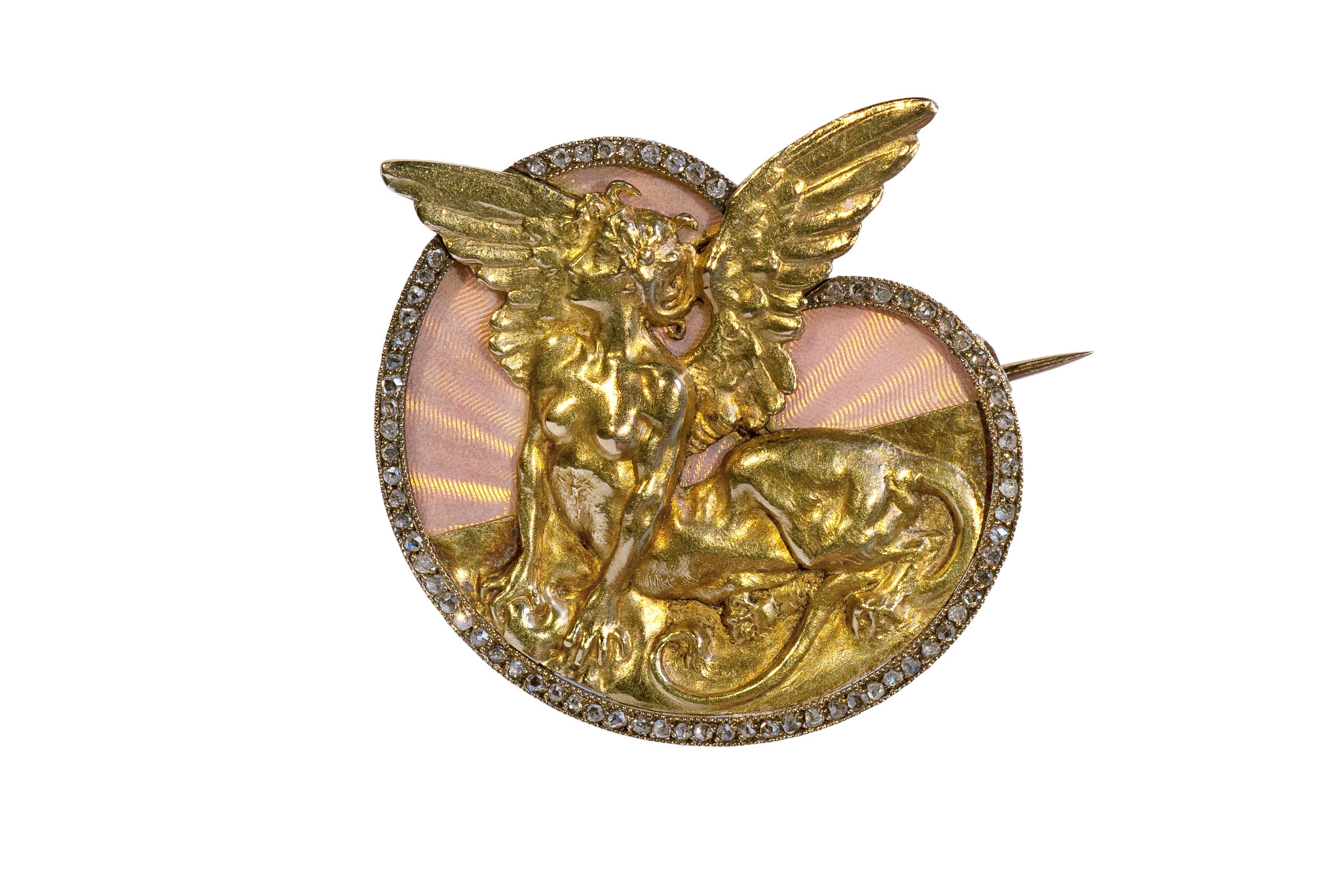
Georges Fouquet was a great French jewellery designer best known for his Art Nouveau creations. He was born in 1862 and died in 1957, thus he lived through the industrialisation of Europe, the turn of the century and both World Wars. His father Alphonse ran a jewellery business which he took over in 1895 and opened a new boutique at 6 Rue Royale in Paris. At the end of the century he worked in collaboration with the artist Alphonse Mucha – the Czech painter and illustrator, one of the most important figures of Art Nouveau. Mucha also designed the new boutique for Fouquet – ‘he conceived the shop as a complete work of art, which would provide a harmonious environment for Fouquet’s jewellery’. The duo executed many important commissions together for the famous French actress Sarah Bernhardt amongst others and presented pieces at the Paris International Exhibition in 1900.
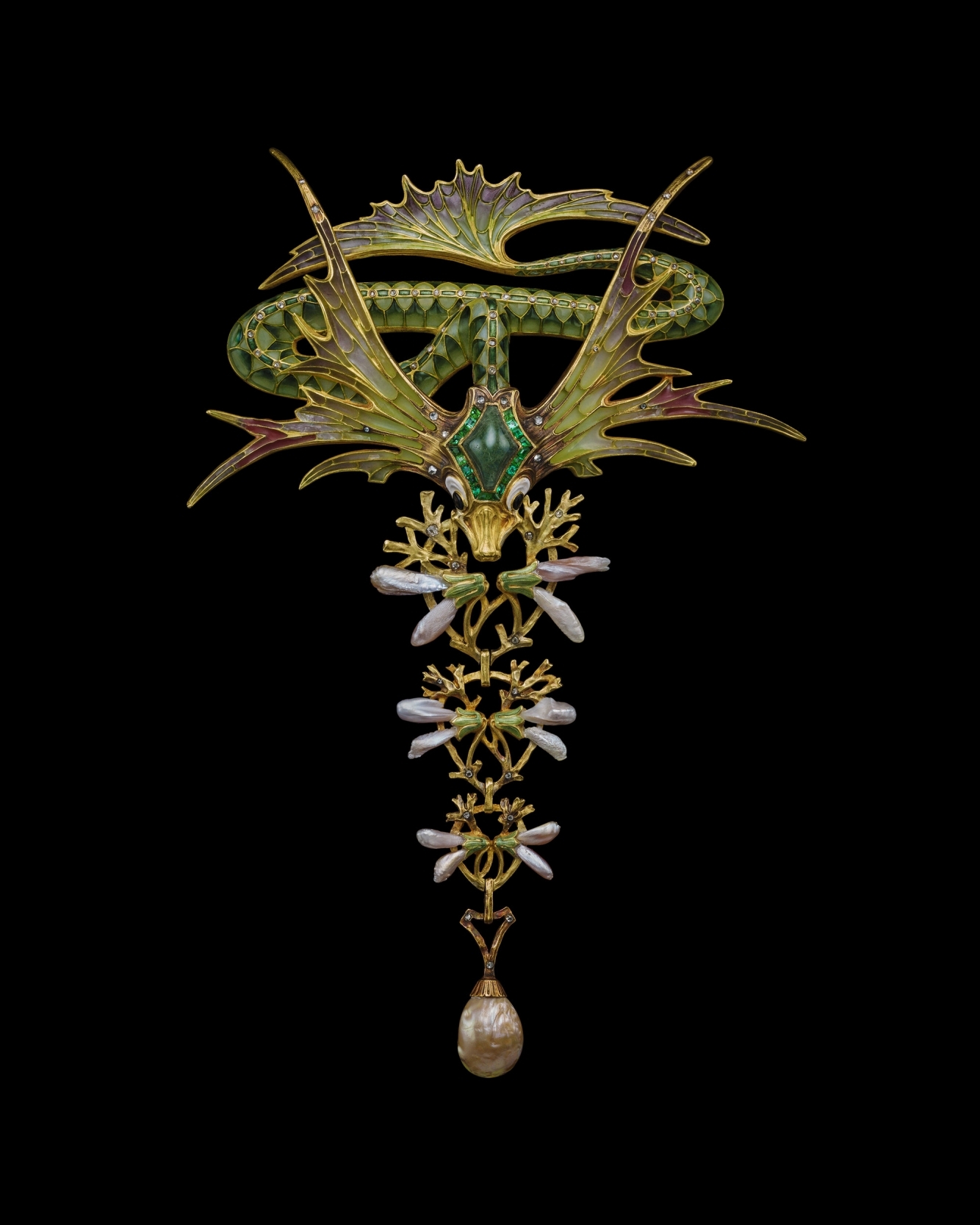
Bloomings
The almost endless inspiration from flora and fauna was a great part of Art Nouveau. Orchids, irises, poppies or tulips; dragonflies and crustaceans, peacocks, swans and other birds were among the motifs featured on different objects.
Having worked with great jewellers like Falize and Boucheron, for whom he created jewellery and objets d’art, the French Lucien Hirtz (1864 – 1928) was one of the best exponents of painted enamel in the early 20th century. He showcased a dim-lit forest on a beautiful enamel brooch designed for the Maison Boucheron.
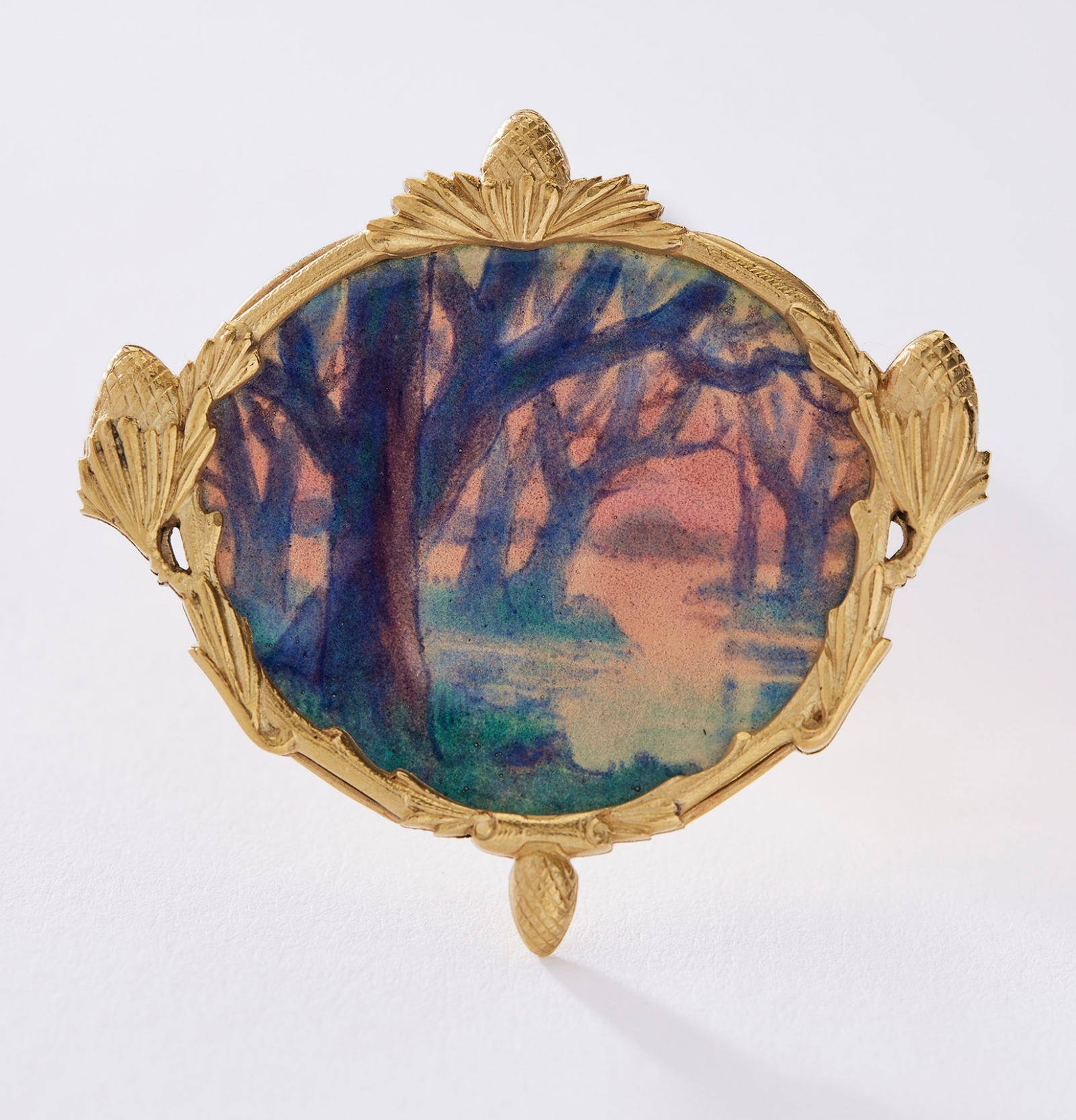
René Lalique had free and fantasy-like interpretations: his female figures emerge from different shapes – women’s bodies with dragonfly or butterfly wings or with tiny insect tails.
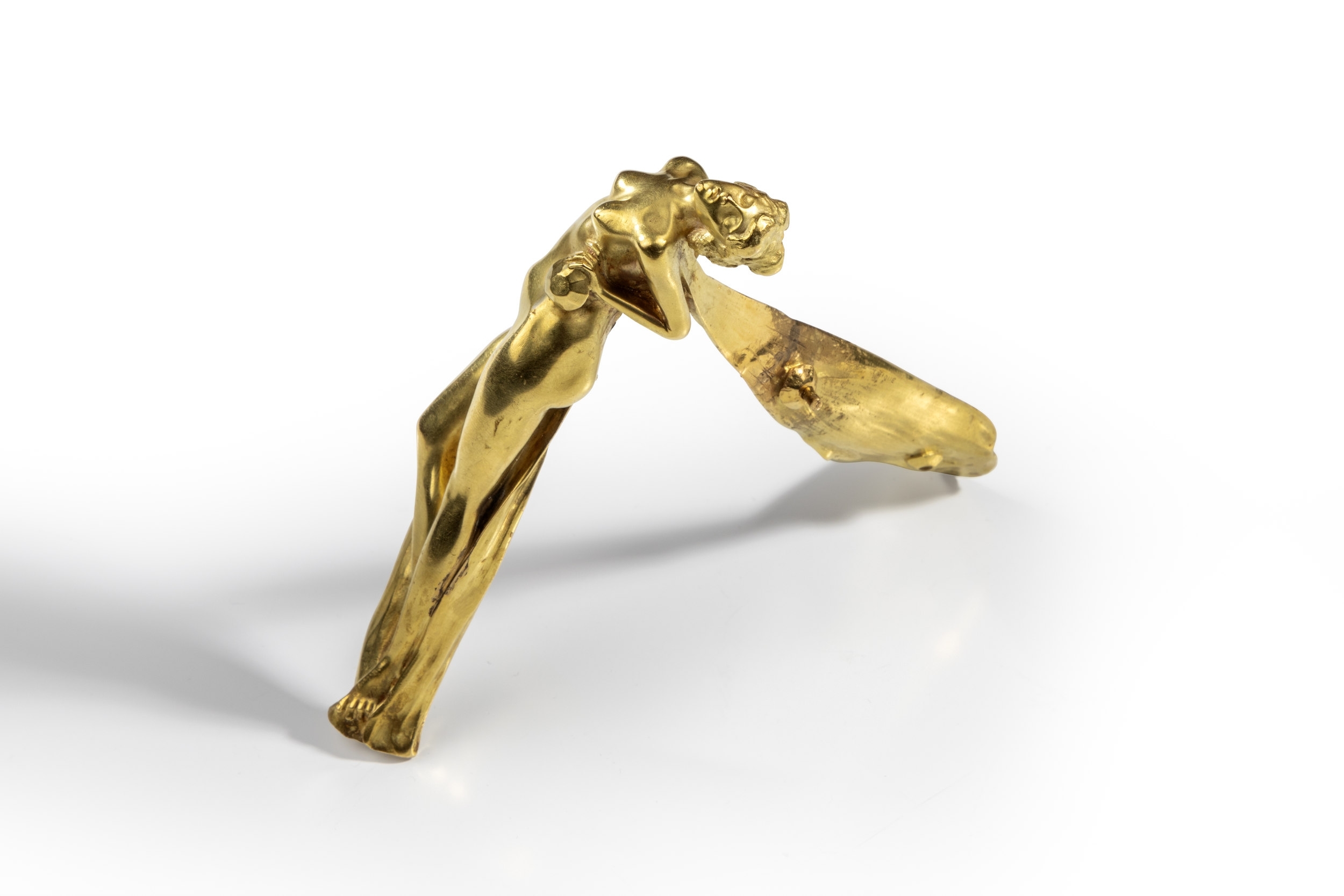
René Lalique was one of the most decisive Art Nouveau artists, his jewellery and household objects are celebrated worldwide to this day. He was born in 1860 and died in 1945. The young Lalique participated in various artistic trainings in Paris and worked as an apprentice in Louis Aucoc’s jewellery workshop in England. He also worked for companies such as Cartier before opening his own boutique in 1890. Lalique achieved his first significant, international success with his jewellery that was the sensation of the 1900 Paris World Expo. He continuously developed the glass technique used in his jewellery and applied it to other objects. From 1902 he worked with glass in Clairefontaine’s home on a manufacture level, but soon opened a factory in Combs-la-Ville. Lalique developed numerous ways to use and manipulate glass in order to use the material in as many ways as possible. The Cristallerie Lalique was opened in 1921 in Wingen-sur-Moder and given its present name in 1962. The brand continues to thrive, you can also visit their museum in Alsace.
Ornamental nature
The natural world, as inspiration in Art Nouveau, manifested in diverse ways. Nature’s creative process itself provides motifs to the jewels -interesting wood patterns, horn, amber or pearls. This can be seen in the glittering mother-of-pearl and gold seascape covering a tortoiseshell comb made by Georges Fouquet in around 1905.
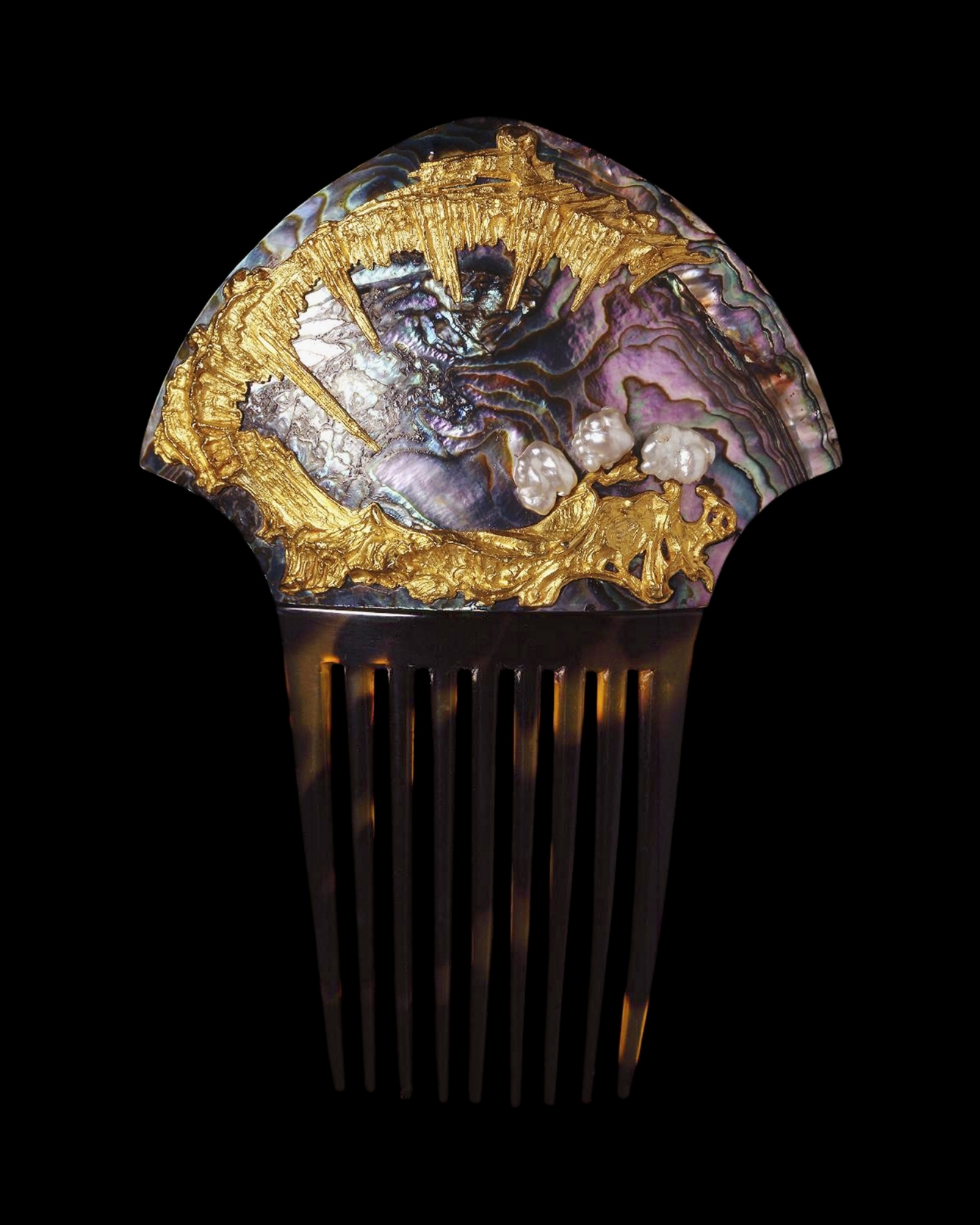
Although Cartier was much more influenced by Art Deco (as the Maison embraced the new style with bracelets, headbands, sautoirs, clocks and vanity boxes) the exhibition includes an exquisite gold and platinum brooch set with diamonds and sapphire.
You can visit the exhibition until 30 September, 2023 with free admission by reservation on the website of the L’ÉCOLE, School of Jewelry Arts.
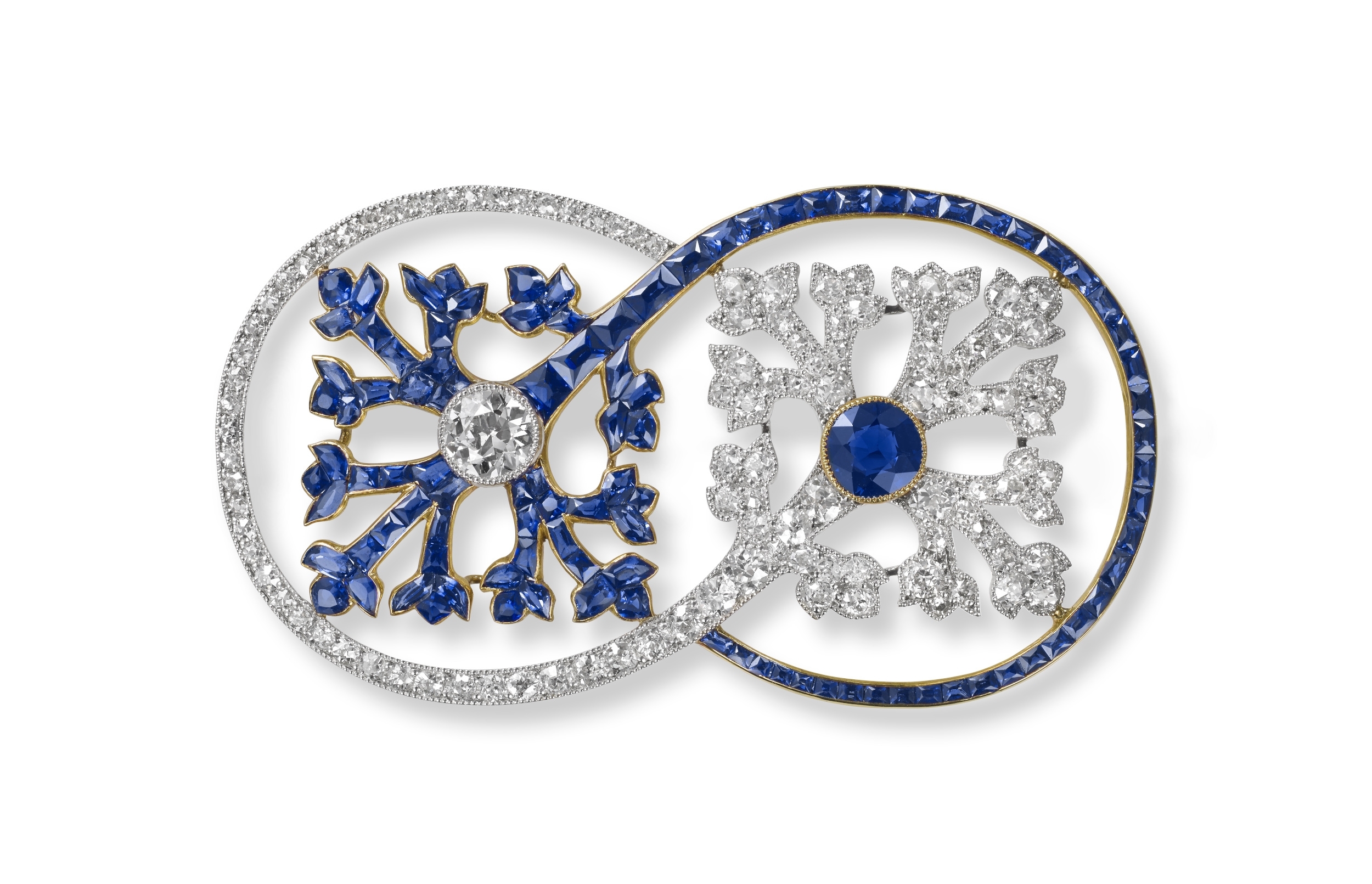
Photo credits: L’ÉCOLE, School of Jewelry Arts, ©ADAGP, Paris, 2023
All registered trademarks are property of their respective owners.
All rights reserved.


